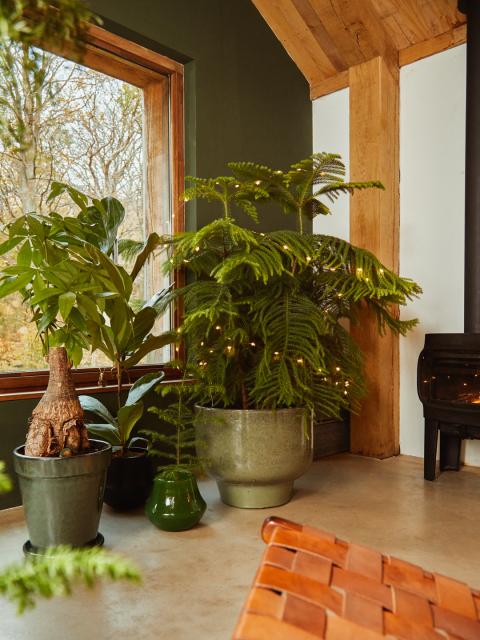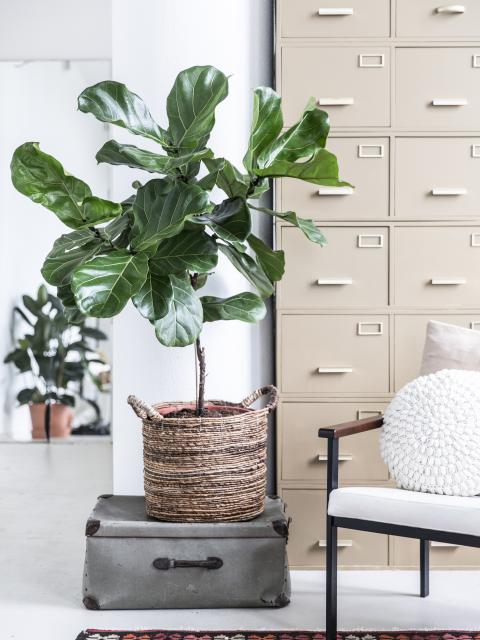Colours and shapes
Pachira aquatica, also known as Malabar chestnut, usually has two or three inter-woven trunks and dark green leaves that resemble a hand with five fingers. It’s a rapid grower that will have a nice full crown of leaves in no time. The structure is fabulous, thanks to the large leaves that grow on fairly long stems, allowing light to pass through. This indoor tree stores water in its trunk and therefore requires comparatively little care. Pachira is ideal for people who like impressive greenery in their home but would rather not spend too much time maintaining it.
Symbolism
According to Chinese feng shui tradition, the leaves, with a bit of imagination look like green hands that capture happiness and good fortune, and the twisted stems store the treasure. In Asia, the plant is also called the money tree. There, it is a traditional housewarming gift that brings good fortune and happiness to the home. In China the number five represents the five elements, and that too makes the five-fingered leaves of the Pachira very popular. The effect is said to be reinforced by placing five plants in one (red) pot or interweaving five trunks.
Origin
Pachira is native to the tropical regions of Central and South America down as far as northern Brazil. The name comes from an old Guyanese Indian language and roughly means ‘sweet water nut’. In the wild, the plant prefers to grow in places where rivers regularly breach their banks. Pachira also thrives in other wet places, such as along riverbanks, in swamps and in damp mountain forests. In the wild the plant can reach a height of 20 metres and Pachira flowers with enormous long yellow petals. They turn into oval brown fruit that can reach a length of 30 cm, and inside are nuts that can be used as a substitute for cocoa. As an indoor tree, the Pachira only provides fabulous greenery, and it is best not to keep is as soggy as in nature (watch out for overwatering!).













